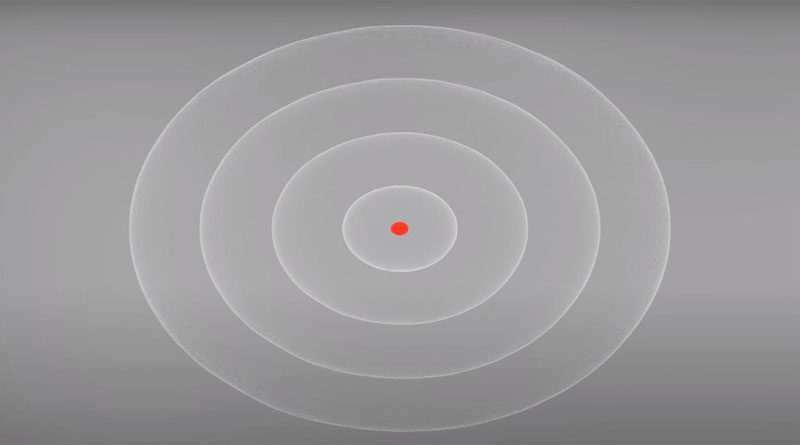What is Acoustics? Types and uses of Acoustics
Last Update on October 02, 2022
| Introduction | Acoustic Energy | Types of Acoustics |Uses of Acoustics |
The definition of acoustics is the study of sound production, control, transmission, reception, and effects (as defined by Merriam-Webster). Many individuals wrongly believe that acoustics is just concerned with music or architecture. The study of musical instruments and building spaces is a part of acoustics, but it also includes a wide range of other subjects, such as noise reduction, seismology, bioacoustics, ultrasounds for medical imaging, Thermo acoustic refrigeration, and electro-acoustic communication.
The study of sound generation, regulation, transmission, reception, and effects call acoustics. The word acoustics derives from the Greek word akoustos, which means “heard.”
Acoustics has significant applications in practically every aspect of life, having its roots in the study of mechanical vibrations and the transmission of these vibrations through mechanical waves. It has played a crucial role in a variety of artistic advances, some of which, particularly those about musical scales and instruments, were the result of extensive research by artists and were only much proceeded to explain as a theory by scientists.
For instance, much of the current understanding of architectural acoustics was gained via decades of experience, and trial and error. It was only recently that the field establishes as a science.

Acoustic technology uses to examine geological, atmospheric, and undersea phenomena. Since Pythagoras first heard the sounds of hammers striking anvils and loops vibrating in the sixth century BC, the study of psychoacoustics—the physical impacts of sound on biological systems—has attracted attention. However, some of the most exciting advancements in medicine have only recently been made possible by the application of modern ultrasonic technology.
Numerous fundamental physical phenomena involving waves and sound are still being studied today, as well as potential applications for these processes in contemporary society.
1. Introduction:
Acousticians are scientists or researchers who study acoustics, and those who work in the area of acoustics technology are Acoustical Engineers. The major function of acoustics is to make the music or conversation sound as good as possible. It performs by lowering sound barriers and boosting elements that aid in proper sound wave transmission. Acoustics was formerly only used in sectors based on sounds, such as auditoriums and theatres, but it is now employed in a wide variety of fields.
The energy that may travel from one location to another is sound. Pressure waves in the form of sound generate when an item vibrates. Energy is carried by sound, which has many uses in daily life. Acoustics is the field of study that studies sound. Jobs in academia (serving as a professor, for example), industry, and laboratory settings are all possible after completing an acoustics degree.
Since acoustics is a very interdisciplinary field, it promotes collaboration with experts in a wide range of fields, such as physics, mathematics, computer science, mechanical and electrical engineering, speech pathology, audiology, biomedicine, music, dialects, and languages.
2. Acoustic Energy:
Acoustic energy defines as a disturbance of energy that travels through matter as a wave. In other words, acoustic energy refers to the energy of mechanical vibrations from its constituent parts. The following stages exist in every acoustic event.
- Reason
- Acoustic wave reproduction
- Reception impact
Transduction is the process by which another form of energy is transformed into sonic energy, resulting in a sound wave. Energy is carried by sound waves when they travel across a medium. The fundamental equation that describes the propagation of sound waves is the acoustic wave equation. The main process in any acoustic event is wave propagation. While sound travels through solids as lengthwise waves, it travels through liquids as a pressure wave.
3. Types of Acoustics:
There are different types of acoustics:
3.1. Environmental Noise:
Roadway-related noise and vibration are a concern for environmental acoustics. Transportation of rail, air travel, and other environmental-related activities are also ecological noise. These are primarily intended to lessen environmental noise and vibration.
The term “environmental noise” refers to outside sounds made by human activity that are undesirable or damaging, such as noise from vehicles, trains, planes, and factories.
3.2. Musical Acoustics:
Music acoustics is a comprehensive field that integrates knowledge from various academic fields, including physics, psychophysics, organology (the categorization of instruments), physiology, music theory, ethnomusicology, signal processing, and instrument construction. It is a subfield of acoustics that studies and describes the mechanics of music, or how to create music by using sounds.
However, the study of musical acoustics focuses on the mechanics of music, or how sounds employ to create music. The human voice, musical instruments, and music therapy are the study topics.
Although, the physics of speech and singing, the operation of musical instruments, computer analysis of melody, and the therapeutic application of music in music therapy are a few examples of study areas.
3.3. Ultrasounds:
Ultrasounds are noises that have a frequency higher than what the human ear can hear. When compared to regular sound, there are no differences in the physical characteristics. The usage of ultrasound is widespread. Ultrasonic equipment uses to find items and measure distances. Physics makes use of ultrasound imaging.
3.4. Infrasounds:
The sounds with a frequency of fewer than 20 Hz call infrasounds. Infrasonics is the study of such noises. Applications include the probability of earthquakes and the identification of petroleum development beneath the earth.
Earthquakes are one of nature’s most significant examples of infrasonic waves. The S-wave, a transverse body wave; the P-wave, a longitudinal body wave; and the L-wave, which travels along the edge of strata mediums, are the three primary forms of earthquake waves.
Infrasonics, which studies sound waves below 20 Hz and up to 0.1 Hz, is another name for this field of study (and rarely to 0.001 Hz). This frequency range is used to track the underground rock and petroleum formations, and monitor earthquakes, and volcanoes. This frequency range uses to investigate the mechanics of the heart using ballistocardiography and seismocardiography.
Vibration and Dynamics:
It is the investigation of the vibrations and environmental interactions caused by mechanical systems. Applications include ground vibrations utilized in railroads and vibration control, which aids in protecting a building from earthquakes.
4. Uses of Acoustics:
A large field of study called acoustics has applications in practically every industry. The following are some common uses for acoustics:
- Medicine
- Geologic
- Architectural industries
- Warfare
- Music
- Detection of earthquakes
- Noise control industries
- Detection of petrol under the Earth
- Study underwater and atmospheric phenomena
Last updated on 26 June 2022.



